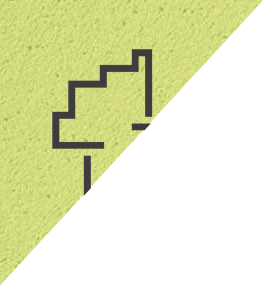Against the background of increasing discussion of the economization of the fine arts and, in particular, ever higher records for prices on the art market, a broad movement is growing that is questioning these developments.
It would appear (once again) to be time to tackle the delicate creature that is a fundamental discourse about art and to provide a space that opens up new opportunities – in this case, far away from the marketplace, at a municipal facility in the Berlin district of Lichtenberg, a peripheral location at the edge of the city and of the Berlin art system.
After all, a municipal gallery (particularly one located in a large-scale housing development) is a type of basic cultural service provision, and also an opportunity for residents to find out more about various movements in contemporary art and to pose their own questions. The guiding conceptual, artistic and curatorial philosophy aims to bring art to the people and to regard art as an everyday good that helps to enrich our lives – in this regard, exaggeration and distance are counterproductive. The key barrier here is not just a fear of the unfamiliar, but above all the impression of art as an out-of-control money machine that is becoming dominant and has very little to do with the production realities of artists themselves.
With this goal in mind, the present approach offers both significant potential and major challenges. The aim here will not be to target the exhibitions at the (assumed) taste of the local residents, but instead to open up opportunities to get to know various modern art movements and to treat them as part of life – just in the same way as the invited artists also have to make a leap into “another world”.
Despite the very accessible location from a transport viewpoint, a certain degree of deliberate effort is required to visit the exhibitions – and, for a number of reasons, this applies both to the residents and to the “typical” Berlin art audience. On the whole, the location in Neu-Hohenschönhausen will help to foster more intensive reflection on the artworks that are exhibited.
With its four rooms, the “HOCHHAUS” offers the opportunity diversify the programme that is presented: alongside two rooms that are reserved for contemporary art (referred to as “free art”), another room will deal with the area of architecture, while a series of different videos will be shown each month in the fourth room. In this way, optimal use is made of the spaces available and various areas of interest and information are addressed.
Free art
The programme will concentrate on contemporary artistic positions by established artists who have been active professionally for many years, mostly in an international context. The aim is to provide an insight into current artistic production, to encourage discourses and to show works from abroad as often as possible, so as to provide a perspective on other cultural spheres alongside the internationality that is already present in Berlin. Of the five planned annual exhibitions, at least one will be developed and held here, i.e. the artists will have to consider and reflect upon the surroundings in an intensive manner and will channel this process into location-specific artistic works. The artists will be invited to carry out research in Neu-Hohenschönhausen and to develop smaller or larger exhibition concepts based on their research activity.
Architecture
Taking the gallery’s location – a high-rise 1980s GDR housing project – as a starting point, exhibitions will be held on various aspects of architecture, the structuring of open space, urban planning etc., ranging from artistic commentaries to architectural designs, and from real to fictive situations. In the context of the current developments of worldwide urbanisation in general and the continuous increase in the population of Berlin in particular, and combined with a period of low interest rates that are leading to a boom in real estate speculation, the issue of urban planning and construction in the future is becoming increasingly relevant and pressing: how do we want to live in the future, how could we live, and what are the consequences of displacement processes for cities? An investigation of history – such as the idealisations of the Bauhaus philosophy, the resulting large-scale residential developments (work/living/leisure) and the individualistic approach of one’s own home – will also be dealt with. Within this framework, the future of residential living and its environments, right through to utopian concepts, will be considered.
Video
There is a broad spectrum of video works in contemporary art that range from documentary through to experimental. The medium of video allows artists to penetrate deeper into the cosmos of fine arts, as videos are immaterial works that are easy to copy, transport and delete. Thus it is possible to show videos by artists whose other works cannot be shown due to transport and insurance costs, for example. In this way, the barriers to international exchange are removed.
